2016 Wire-Wheel Adventure Shootout
The Wrong-Turn Gang goes on an adventure ride
The one overriding edict in choosing this year’s consortium of adventure bike players is obvious from the story’s title – spoked-hoops, which essentially demonstrates a manufacturer’s commitment to the off-road worthiness of its bike. The introduction of Honda’s new Africa Twin has the potential of re-racking the pecking order in motorcycling’s hottest category, so we gathered five of its likely competitors that are either top-rated or recently updated. The Honda bridges engine displacements, ranging from Triumph’s 800cc Tiger XCx to Yamaha’s 1199cc Super Ténéré ES, and we also included ADV icons like KTM’s 1190 R Adventure and BMW’s what-will-they-think-of-next R1200GS Adventure, plus Ducati’s radical A-T entrant, the new Multistrada Enduro.
Instead of traversing California’s entire coastline like last year’s 2015 Ultimate Sports-Adventure-Touring Shootout, we kept things local this time ’round, taking the longest, twistiest route to SoCal’s Big Bear Lake area. Once in the mountains, the plan was to spend a couple of days riding a variety of mildly challenging off-road routes an adventure bike rider might encounter. What we discovered, in addition to the strengths and weaknesses of the bikes ridden, is the MO staff’s terrible sense of direction and inability to follow turn-by-turn GPS instruction.
Day 1
Things got underway normally enough with an early morning breakfast at Hill Street Cafe at the base of Angeles Crest Highway. Bellies full, we traced Hwy. 2 northeast toward a rendezvous with Sean Alexander. Triumph’s scramble to provide a Tiger 800 XCx had Alexander picking up and packing the Tiger Tuesday morning instead of prior to our launch date. The tight timeframe meant Alexander missed breakfast, and the Tiger missed having saddlebags installed. Once our entire crew was assembled, including Scott Rousseau from Dirtbikes.com subbing for Troy Siahaan, our boy band left the Angeles National Forest for the adjoining one in San Bernadino.
Climbing into the San Berdoo mountains, we wend our way up a seriously tight roadway, still on course to the tasty lunch spot I pre-programmed into the BMW’s GPS. Riding the Tiger behind Alexander on the GS Adventure, there’s an expected lack of corner exit punch from the smaller-displacement machine. The Tiger’s sporty-quick steering makes quick work of the unrelenting stream of 15-mph corners, but they’re accompanied by the sound of dragging footpegs, which are positioned comfortably low to allow plenty of legroom on an adventure bike with only a 33-inch stock seat height.
“On the street, the XCx handles like the sportbikes from which it is derived, even with its skinny 21-inch front wheel,” says Rousseau. “It turns into a corner easily, delivers decent feedback through the front end, and is fun to hammer the throttle on the exit so that the ears can hear the sweet growl of that silky Triple.”
2016 Triumph Tiger 800 XCx Review
The least physically imposing bike of the six bikes assembled, the Tiger resembles a VW Beetle outfitted in off-road attire among monster trucks with bigger-is-better attitudes. “A great choice for a smaller person like myself,” says 5-foot-8 John Burns. The Tiger also boasts the only non-Twin engine arrangement in the group. While not an especially strong characteristic in the dirt (more on that later), the inline-three was a favorite among all testers when riding pavement.
“Quick revving, with considerably less flywheel effect than the others here,” says Kevin Duke. “The Tiger’s three-cylinder motor sounds terrific as it revs up, sonically delicious aside from the traditional Triumph whistling noise at lower revs.”
At the other end of the weight/displacement spectrum is BMW’s R1200GS Adventure – the lovechild of Angus MacGyver and Robin Leach – the solid gold Swiss Army Knife of the rich and famous. The GS Adventure does everything, from interstate-straight to light-footed sportiness to competent off-roading, but it clearly distinguishes itself from the other bikes here as the indisputable king of electronic gadgetry, with a price tag ($24,384 as tested) commensurate with its amount of gizmos.
“If cost was no object, the GS would be my first choice if I had to ride from California to New York via Utah and Colorado,” says Dukester. “It’s super comfortable and capable of traversing rock beds and canyons and interstates with unmatched aplomb.”
At 632 wet pounds the Adventure scales in 15 pounds lighter than Ducati’s new Multistrada Enduro (647 pounds wet), but some of that is attributed to the soft luggage of the BMW vs. the hard luggage of the Duc. Both bikes carry 7.9 gallons (about 48 pounds) of fuel, which is 1.8 gallons (11 pounds) more than the bike with the next most voluminous fuel capacity, Yamaha’s Super Ténéré with 6.1 gallons.
Like the Duc, the BMW is outfitted with semi-active suspension, which works satisfactory, but compared to the Multistrada and its Skyhook suspension, some of our testers thought it could be better. “While the GS never put a wheel out of place on the street, the Dynamic ESA felt a little soft for my tastes with the ride being too floaty,” says Brasfield. Conversely, Duke had praise for the Beemer’s suspension that could be dialed up to his liking no matter the terrain or speed, and he had kudos for its Telelever fork that nearly eliminates front-end diving during deceleration, a feature appreciated when two-upping a passenger.
We didn’t make it far from our lunch stop – about 15 seconds after saddling up, in fact – before veering from the route I painstakingly planned. After looping aimlessly around the residential area of Crestline, CA, we were again enjoying the twisty, elevation-changing roads mountains typically deliver. So what if we missed a turn, there’s always another twistier mountain road just around the bend, making it easy to keep gathering the mileage necessary in assessing the streetability of each machine. If only we’d known how much our streetwise, cavalier attitudes would come to haunt us the next day.
Hold that thought, as we’ve a few more models to suss out on the pavement today.
It’d be easy to assume that Ducati’s fire-breathing 1198cc DVT Testastretta Twin would vanquish anything in ADV land, but it had yet to meet KTM’s 1190 Adventure R. On paper the Duc’s Twin clearly has the upper hand: 132.7 hp at 9,700 rpm and 80.6 lb-ft of torque at 7,600 rpm vs. 119.7 hp at 9,900 rpm and 74.3 lb-ft of torque at 7,800 rpm of the KTM. The 13 horsepower and 6.3 pound-feet to the Duc’s advantage isn’t enough, though, to make up for the 82-pound difference in wet weight the KTM enjoys, 647 pounds vs. 565 pounds.
2016 Ducati Multistrada 1200 Enduro First Ride Review
The Scorecard reveals the power-to-weight equation, with the KTM moving 4.7 pounds per horsepower to the Duc’s 4.8, and 7.6 pounds per pound-foot for the KTM vs. 7.8 pounds per pound-foot for the Duc, but there’s no denying the roll-on comparisons where the KTM stepped away from the Ducati in 6th-gear races, as well as edging the Duc in a 4th-gear contest. The BMW did well to nearly keep pace during the 6th-gear roll-ons.
“The KTM’s V-Twin delivers serious punch on and off the trail,” says Rousseau. “To me, it felt as if it was in a close heat with the Ducati for overall power output. The 1190 isn’t as smooth as the Honda once you venture off-road, but the big orange machine more than makes up that by being snappy and fun.”
Brasfield chimes in about the Ducati, “In the twisties, the engine was able to unleash its beast mode. Ripping through the gears after exiting a corner never failed to put a smile on my face.” To which Sean Alexander adds, “Like the KTM, the Multistrada feels better the faster you ride it – that’s a lovable trait in a motorcycle.”
Almost equal to the BMW in bells and whistles, the Multistrada should make for a fantastic long-distance travel companion, but more than one tester commented about the bike’s ergonomics. Brasfield says it best:
“The Duc’s riding position was quite odd,” he says. “First, the seat is really high when you’re trying to mount the bike or just put both feet on the ground. Then, the seat is really low when you’re actually riding. This feeling comes less from the seat-to-peg relationship than the seat-to-bar. When sitting in the saddle, the grips seem strangely high. However, when standing on the pegs, I thought the bar was the right height.”
Already a ringer for best dirtbike in the group, KTM’s Adventure R comes outfitted with knobby, Continental TKC-80 tires. Providing more grip and stability in the dirt than any other tire in the group, the knobby tires moved around like bags of jello on the pavement. Slower corner speeds were redressed with aggressive corner exiting throttle application, squirting the KTM out of bends and keeping it nipping at the rear wheels of bikes with more streetable tires. The other downside to the soft and grippy TKC-80s is that they burn up quickly when ridden on the pavement.
“The choice of knobbies on the KTM ruined the street portion of the ride for me,” complains Brasfield. “The tire squirm kept me from trusting the bike when leaned over on pavement. Though the knobbies worked great in the dirt, they didn’t wear well and were nearly toast by the time our test was finished.”
Burnsie wasn’t as affected by the knobbies as he was with the bike’s height, but he’s also much shorter than Brasfield. “On pavement, those knobbies feel pretty sketchy until you get used to them, and then they still feel sketchy. It’s fun to ride on the street anyway, thanks to the motor. Tiptoe in and just whack the throttle at exit and it closes the gap on all the other bikes, using its TC to keep the rear knobby marginally in traction.”
As for the two Japanese bikes, besides sharing parallel-Twin engine architecture, they couldn’t be farther apart from one another. Honda’s Africa Twin makes do with only switchable TC and ABS, while Yamaha’s Super Ténéré ES features those technologies plus cruise control, EAS, ride modes, tire-pressure monitor, and an adjustable windscreen. For these electronic upgrades and a 201cc increase in engine capacity, expect to fork over an additional $3,674.
What was largely determined between the two Asian bikes is that while the Honda excels in both on- and off-road capacities, the Yamaha makes for a better street bike than it does off-roader.
“The Super Ten would make a good candidate for a cross-country tourer, as it’s wonderfully comfortable, never needs a chain oiled or adjusted, and it has a huge dealer network nationwide, not that it’ll probably ever need much mechanical attention,” says Duke.
On paper the Honda fails to impress, but as every rider in our group found out after throwing a leg over the Africa Twin, the bike simply works and works well. It’s not the most powerful or otherwise standout bike here in any category, it just quietly (not really, it’s one of the best sounding Hondas in a long time, barking out an appealing V-Twin-like note from its 270-degree crank arrangement) goes about the task at hand.
“Feels far and away the most natural as soon as you sit on it…. then keeps feeling the most natural,” says Alexander. “The Africa Twin has ‘motorcycle’ blood and can’t help but to feel and act exactly like you expect a motorcycle to feel and act. I absolutely love it.”
So, if your adventure-bike riding is 90% or more a paved experience, each bike here boasts certain qualities you might find attractive depending on your needs. The three heavier, electronically laden vessels – BMW, Ducati, Yamaha – make for great long-distance tourers, while the two lighter, less electronically burdened bikes – KTM and Honda – provide better short-distance machines, with the Triumph falling somewhere in the middle.
And with that, we end our first day street portion of the test with arrival at Pineknot campground. Due to fire restrictions – not even a charcoal fire was allowed, thus hindering our ability to BBQ anything – we chose a location close to the town of Big Bear so we could enjoy a wholesome dinner without having to ride 20 miles into the wilderness afterward. This decision worked to our favor even more the following night.
Day 2
For the off-road portion of our trip, I reached out to Miguel Burgi of the Big Bear Trail Riders Motorcycle Club. Miguel supplied me with a couple of GPS files containing two loops surrounding the Big Bear Lake area. I loaded them into the BMW’s Garmin and figured the adventure portion of our test was covered. Following an early morning rise and a large breakfast, we were underway with the GPS leading us directly to our transition from paved to dirt road. So many miles thereafter, I’m not sure how many, it became apparent we took a wrong turn, or three, at which time we didn’t know what lay ahead, but we sure as hell weren’t turning around and going back. Adventure was upon us.
Ducati must have known something we didn’t when they insisted we take a Multistrada Enduro outfitted with Enduro Pack accoutrements. It’s not often we professional testers drop a $24k-bike, but on this occasion it was more than once, and on both sides. The good thing is, besides the plastic handguards (see JB’s Top 10 Disaster Preventives When Adventure Riding) the Multi survived largely unscathed. The bad thing is, most all of these incidents were mere tip-overs – the Duc carries its weight high, so once it starts leaning, it’s hard to stop.
“On the trail the Ducati felt tall at just the wrong times,” says Burns. “I laid it down gently the first time when I put my right foot down to stop in some soft forest duff, and not even a scratch. The second time I laid it down gently also, when my right leg just couldn’t support it at a stop at the top of a rocky trail, and broke the right plastic handguard. (The left plastic handguard I’d already broken when I sideswiped a tree branch that was in my way.) Aside from the handguards, the rest of the bike came through all that unscuffed.”
Top-heavy or not, though, the Multistrada Enduro proved to be a formidable off-roader. “Being a big, heavy motorcycle with a mega motor and expensive looking bodywork means the Multistrada Enduro should be a terrible off-road bike,” says Alexander. “It isn’t.”
Even our dirt-riding-ringer Rousseau was impressed with the Multi’s off-road performance. “I was blown away by the Duc’s Testastretta L-Twin. I would never have believed that an engine designed primarily for road use can be so capable in the dirt. Switching to Enduro mode backs the output down by 60 horsepower and makes the Multistrada smooth and silky, but it still delivers plenty of grunt and excellent response at any rpm. I was especially impressed by the traction-control system which helps it crawl up hills like a C1 Ariete tank. What an awesome powerplant!”
As good as the Duc’s engine is, the whole package failed to impress everyone. “The Multistrada is one of my all-time favorite bikes,” says Duke, “But, for me, the Multi Enduro misses the mark. I disliked how big and heavy it felt off-road, and it doesn’t handle on the road as predictably and fluidly as the regular Multi.”
Even for my 5-foot-11 frame, which can touch the ground when sitting atop the Ducati, it’s top-heaviness got the better of me at a standstill when my foot slipped on a rock and the bike tipped over. The Ducati being nearly the same weight as the BMW, I felt more in control of the GS due to its lower center of gravity, especially when navigating it through a slower technical section or down a rocky decline. And I wasn’t alone in this assessment.
“Handling is stable and steady, and more than acceptable, although a tad cumbersome on the trail due to the overall weight of the package,” says Rousseau about the GS. “Its saving grace is the low CoG that the Boxer engine brings to the party. Despite its considerable size and weight, it doesn’t feel top heavy.”
To which Brasfield adds, “The engine has the grunt to make ultra-low speed maneuvers a breeze on the GS. Even when just pushing the bike around in the dirt to take photos, I used the torque and nursed the clutch in the friction zone.”
Although Alexander’s in denial about the KTM being the best dirtbike of the bunch, it most certainly is. Third heaviest of the group – only 20 pounds more than the Honda – the tall, comparably thin KTM relies on the company’s history of off-roading prowess to deliver an exceptionally dirt-oriented adventure bike. If I lived in an area such as Big Bear with off-roading nirvana only a short paved-road-ride away, the KTM is the obvious choice (or maybe the Honda).
“The 1190 R would be my first choice if riding dirt trails were a priority and I needed to get there in a hurry,” Duke raved. “I’m still amazed at the single-track dirtbike trails I was able to ride the KTM on at its launch in Colorado, and it again proved its mettle in the silty crap we rode on this time out.”
And Rousseau adds his stamp of dirt-worthy approval. “In the dirt the KTM was almost without equal for me, delivering an arrow-stable feel at high speeds while cornering with precision. The KTM didn’t steer as lightly as the Honda when plonking along in first or second gear, but it also didn’t feel as top-heavy as the other bikes in this group.”
Although lacking the electronically adjustable suspension of its non-R stablemate, the 1190 Adventure’s WP suspenders, with easy-to-reach clickers on the top of the fork legs, didn’t fail to impress. The fork and shock can suck up bumps, rocks, roots and whatever else you throw at it. Even Alexander admitted enjoying the KTM in the dirt. “The KTM felt a bit odd to me ergonomically at first, but I have to admit that it becomes much more natural feeling when ridden very fast off-road.”
We’ll let Burnsie point out the obvious. “Adding an “R” onto 1190 Adventure was a bad idea in my book, because it caused the seat to rise from 860 to 890mm. I can barely ride this one on pavement, much less off-road. Actually it’s not the riding at all, it’s the stopping and starting. Once it’s rolling, it’s a magic carpet if you’re a decent off-road rider.”
Close behind the KTM almost everywhere off-road is the Africa Twin. Suffering a huge power deficit to the KTM never stopped the Honda from keeping pace, although the more street-biased tires it’s outfitted with certainly did. Honda may be late to the current adventure-bike party, but it was worth the wait. It is equally as comfortable in the dirt as it is on pavement.
“The Africa Twin handles like a dream, and I’m convinced that if it had been fitted with more knobby tires of similar quality to the Continental TKC-80s on the KTM or the Pirellis on the Ducati, the Honda would have thoroughly dominated the dirt portions of our ride,” says Rousseau.
“The Africa Twin’s suspension was my favorite of the group, and it should feel the most familiar to the majority of dirtbike riders – plush yet controlled,” Rousseau continues. “And while the rest of the bikes here force the rider to consult owner’s manuals and/or have a degree in computer science in order to make adjustments, the Honda’s screwdriver slots on the top and bottom of the fork and manual preload adjuster on the shock allow easy suspension tuning.”
Duke had high praise for the overall capabilities of the Africa Twin: “It’s the inverse of the complicated and heavy GS – it’s lacking features but not capabilities, and it’s almost 50% cheaper. It’s a stunning achievement for the money.”
Probably the biggest detriment to the Honda are its saddlebags, which use nylon tabs to slot into their mounts. They were put to the test when an unexpected sandwash jerked the AT’s handlebar sideways and launched the bike off the trail. Even though I was able to reattach the right bag with a busted front mount and continue, there’s no dressing up the luggage – not even the chrome latches.
“For $13k, it’s a ton of ADV bike, but what you don’t get and I’d miss terribly is cruise control,” says Burns. “The bag mounts are kind of Fisher-Price too, but it looks like you can replace the broken mount instead of the entire bag.”
As delivered, the Yamaha Super Ténéré lacked a real skidplate which would eventually hobble the Ténéré when Alexander rode it down a rocky descent, catching the drain plug on a stone ledge in the process. The Ténéré did its best Deepwater Horizon impression when it stopped at the bottom of the hill, puking oil from the newly formed gouge in its oil pan. It’s our fault, really, not just for causing the incident but for not specifying that the stock nylon skidplate be replaced with the 3mm-thick, aluminum skidplate available from the Ténéré’s accessory catalog.
Prior to its ultimate demise, Brasfield enjoyed both riding and crashing the Ténéré. “I’m bummed that I didn’t get more time on the Ténéré in the dirt,” he says. “When ridden off-road, I set the ride mode to Tour to soften the throttle inputs. I also turned off TC since it tended to cut the throttle more than I liked when the rear wheel spun on softer surfaces. Also, the Tenere crashes pretty well. On one steep downhill, I clipped a large rock with my front wheel, sending the Ténéré into a wobble. I overcorrected and ended up careening into the brush. Not only did the Ténéré’s hand guard withstand the impact, but the remainder of the bike also showed no real damage – not even scratches. The bags stayed in place, too.”
Like the Ducati, however, the Ténéré is a top-heavy motorcycle. Although its suspension seemed well-configured for riding either on- or off-road, it’s parallel-Twin engine isn’t much more impressive than Honda’s mill.
“For an engine that displaces 1199cc, I expected the Super Ténéré’s inline-Twin to be a little more ballsy off the bottom” says Rousseau, “but its power appears to be concentrated more in the midrange, which was excellent for highway riding but not so great when I needed to get it to respond at low rpm in order to clear obstacles on the trail. The Yamaha engine is clearly aimed more toward pounding the pavement than slogging through the dirt.”
Late night, camp-side emergency Ténéré repair was fueled by pizza, beer, scotch and Camels. The next morning our repair efforts proved insufficient (so they ditched the bike and had me rescue it. Meaning I got to sample the beautiful roads near Big Bear… in my truck -TS). We’re blaming the beer and scotch.
Which brings us, finally, to the Triumph. As mentioned earlier, the testers enjoyed spinning its three-cylinder engine through paved twisties, but were less fond of the bike’s lack of bottom-end grunt when riding in the dirt. It’s easy to see why a twin-cylinder arrangement is the engine configuration of choice among ADV bikes.
“I had the least fun on the XCx whenever we ventured off-road,” says Rousseau.
But Duke, fresh off a broken hip, was kinder to the Tiger. “In this group of big rigs, the Tiger feels especially lithe. I was happy to be aboard it while navigating some of the more technical off-road sections we traversed. In the dirt, it’s held back only by an engine that revs too quickly and a clutch with a narrow engagement zone.”
Helping the Tiger in off-road situations, though, is the amazingly well-thought-out combination of preset parameters in its Off-Road riding mode. A simple button push on the left front of the instrument cluster switched the Tiger from Road to Off-Road mode, effectively changing the power delivery, TC and ABS settings to better suit unpaved conditions. And, if you’re not happy with the factory settings you can modify them in Rider mode, personalizing them to your preferences, which is then also selectable via the same instrument cluster button.
“The off-road ride mode worked well, though the narrow clutch engagement late in the lever travel meant that the Triumph was easier to stall in the slow, tight, rocky stuff than the other bikes,” says Brasfield.
The Tiger’s seating position is somewhat more road biased with its handlebars positioned lower than other off-road adventurers, forcing a rider to lean over a tad further when standing on the pegs. Taller riders never complained of discomfort, and shorter riders welcomed its relatively low seat height adjustable from 33.0 to 33.8-inches.
For anyone entertaining the thought of longer-distance traveling, the Triumph’s cruise control is almost worth the price of admission alone. The set-it-and-forget-it option for long stretches of straight lines can’t be beat, a feature also available on the BMW, Ducati, and Yamaha.
“This is cruise control the way it should be: click only the set button to engage it, with no silly on/off switch,” says Duke. The Tiger is also blessed with the only self-cancelling turnsignals of the group, which are cool once you get lazy enough to let them do their job.
Post Adventure
After dispatching Troy to transport our injured Super Ténéré back to Yamaha headquarters, we continued about our business of riding and photo/video production. In Lucerne Valley we stumble across the post-apocalyptic remains of a Breaking Bad motorhome – the perfect backdrop to our adventurous adventure seen in this article’s video.
Once we did return home and showered the stink off, we set to the task of tallying scores and comparing notes. This is when the disparity among the variety of machines gets interesting again, for we basically have three different winners.
Objective Scoring
| BMW R1200GS Adventure | 76.93% |
| Ducati Multistrada Enduro | 80.13% |
| Honda Africa Twin | 94.54% |
| KTM 1190 Adventure R | 91.83% |
| Triumph Tiger 800XCx | 90.05% |
| Yamaha Super Ténéré | 83.95% |
Winning the Objective category of the Scorecard by virtue of its low price and weight, the Africa Twin managed to defeat the more powerful KTM by 2.5%, while the weight and price of the BMW and Ducati had them languishing in last (especially the relatively expensive but underpowered BMW).
Subjective Scoring
| BMW R1200GS Adventure | 90.16% |
| Ducati Multistrada Enduro | 89.71% |
| Honda Africa Twin | 85.26% |
| KTM 1190 Adventure R | 89.23% |
| Triumph Tiger 800XCx | 80.48% |
| Yamaha Super Ténéré | 84.62% |
Moving on to the Subjective scoring we find a very tight race between the BMW, Ducati and KTM, finishing in that order with the OG measuring stick fending off the newcomer Ducati by a scant 0.45%. Three editors chose the BMW, one tied the BMW with the Duc, one chose the Duc, while a one lone editor picked the KTM first (that, of course, was guest-tester dirt guy Rousseau).
Overall Scores
| BMW R1200GS Adventure | 87.68% |
| Ducati Multistrada Enduro | 87.92% |
| Honda Africa Twin | 87.00% |
| KTM 1190 Adventure R | 89.72% |
| Triumph Tiger 800XCx | 82.27% |
| Yamaha Super Ténéré | 84.49% |
Surprisingly, when all the scores were combined together, it was the dirtable KTM 1190 Adventure R claiming the overall win by a 2% margin over the close-scoring Ducati, BMW, and Africa Twin, finishing in that order. Had we stayed on our designated dirt route, or if the Honda or BMW had tires similar to those mounted on the Ducati, maybe the finishing order would have been different.
But for now, in this test, the KTM reigns supreme!
2016 Wire-Wheel Adventure Shootout Hover your mouse over the overall score for individual category ratings. | |||||||||||||||||||||||||||||||||||||||||||||||||||||||||||||||||||||||||||||||||||||||||||||||||||||||||||||||||||||||||||||||||||||||||||||||||||||||||||||||||||||||||||||
| Motorcycle | Overall | Overall | Overall | ||||||||||||||||||||||||||||||||||||||||||||||||||||||||||||||||||||||||||||||||||||||||||||||||||||||||||||||||||||||||||||||||||||||||||||||||||||||||||||||||||||||||||
|---|---|---|---|---|---|---|---|---|---|---|---|---|---|---|---|---|---|---|---|---|---|---|---|---|---|---|---|---|---|---|---|---|---|---|---|---|---|---|---|---|---|---|---|---|---|---|---|---|---|---|---|---|---|---|---|---|---|---|---|---|---|---|---|---|---|---|---|---|---|---|---|---|---|---|---|---|---|---|---|---|---|---|---|---|---|---|---|---|---|---|---|---|---|---|---|---|---|---|---|---|---|---|---|---|---|---|---|---|---|---|---|---|---|---|---|---|---|---|---|---|---|---|---|---|---|---|---|---|---|---|---|---|---|---|---|---|---|---|---|---|---|---|---|---|---|---|---|---|---|---|---|---|---|---|---|---|---|---|---|---|---|---|---|---|---|---|---|---|---|---|---|---|---|
| BMW R1200GS Adventure | 87.7% BMW R1200GS Adventure Overall: 87.7% MSRP: 59.1% Weight: 86.2% lb/hp: 78.3% lb/lb-ft.: 92.7% Engine: 89.8% Transmission: 88.3% Handling: 85.0% Brakes: 88.8% Suspension: 87.9% Technology: 95.8% Instruments: 92.1% Ergonomics: 92.9% Luggage: 86.7% Quality: 95.4% Cool Factor: 93.8% Grin Factor: 85.8% | Ducati Multistrada Enduro | 87.9% Ducati Multistrada Enduro Overall: 87.9% MSRP: 58.0% Weight: 84.2% lb/hp: 99.0% lb/lb-ft.: 97.4% Engine: 91.5% Transmission: 80.0% Handling: 82.5% Brakes: 89.2% Suspension: 91.3% Technology: 94.2% Instruments: 92.5% Ergonomics: 85.4% Luggage: 89.6% Quality: 92.9% Cool Factor: 95.4% Grin Factor: 90.4% | Honda Africa Twin | 87.0% Honda Africa Twin Overall: 87.0% MSRP: 100% Weight: 100% lb/hp: 73.4% lb/lb-ft.: 93.8% Engine: 87.1% Transmission: 92.9% Handling: 93.8% Brakes: 85.4% Suspension: 87.1% Technology: 65.0% Instruments: 82.5% Ergonomics: 91.7% Luggage: 73.3% Quality: 88.8% Cool Factor: 85.4% Grin Factor: 88.3% | ||||||||||||||||||||||||||||||||||||||||||||||||||||||||||||||||||||||||||||||||||||||||||||||||||||||||||||||||||||||||||||||||||||||||||||||||||||||||||||||||||||||||
| KTM 1190 Adventure R | 89.7% KTM 1190 Adventure R Overall: 89.7% MSRP: 79.0% Weight: 96.5% lb/hp: 100% lb/lb-ft.: 100% Engine: 95.0% Transmission: 90.8% Handling: 86.3% Brakes: 87.1% Suspension: 90.0% Technology: 84.2% Instruments: 84.6% Ergonomics: 86.3% Luggage: 87.5% Quality: 90.8% Cool Factor: 91.7% Grin Factor: 90.8% | Triumph Tiger 800XCx | 82.3% Triumph Tiger 800XCx Overall: 82.3% MSRP: 96.3% Weight: 99.6% lb/hp: 74.6% lb/lb-ft.: 73.8% Engine: 83.5% Transmission: 82.9% Handling: 85.4% Brakes: 85.0% Suspension: 84.2% Technology: 78.8% Instruments: 82.9% Ergonomics: 84.6% Luggage: 87.5% Quality: 85.4% Cool Factor: 79.2% Grin Factor: 80.8% | Yamaha Super Ténéré | 84.5% Yamaha Super Ténéré Overall: 84.5% MSRP: 82.9% Weight: 89.2% lb/hp: 70.2% lb/lb-ft.: 89.4% Engine: 82.9% Transmission: 86.3% Handling: 88.3% Brakes: 86.3% Suspension: 85.8% Technology: 88.3% Instruments: 85.0% Ergonomics: 88.3% Luggage: 85.8% Quality: 85.4% Cool Factor: 79.6% Grin Factor: 80.0% | ||||||||||||||||||||||||||||||||||||||||||||||||||||||||||||||||||||||||||||||||||||||||||||||||||||||||||||||||||||||||||||||||||||||||||||||||||||||||||||||||||||||||
Hover Over For 2016 Wire-Wheel Adventure Shootout Specifications
| |||||||||||||||||||||||||||||||||||||||||||||||||||||||||||||||||||||||||||||||||||||||||||||||||||||||||||||||||||||||||||||||||||||||||||||||||||||||||||||||||||||||||||||
A former Motorcycle.com staffer who has gone on to greener pastures, Tom Roderick still can't get the motorcycle bug out of his system. And honestly, we still miss having him around. Tom is now a regular freelance writer and tester for Motorcycle.com when his schedule allows, and his experience, riding ability, writing talent, and quick wit are still a joy to have – even if we don't get to experience it as much as we used to.
More by Tom Roderick



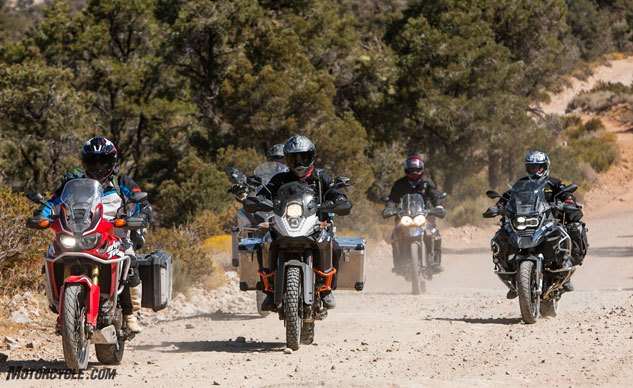
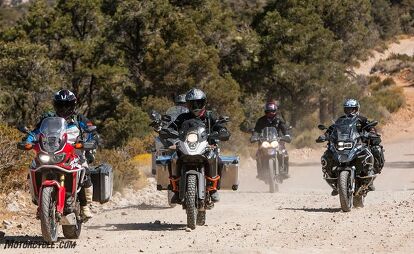

















































































































































































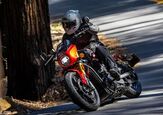
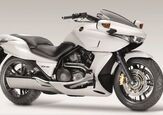
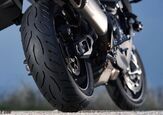
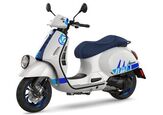
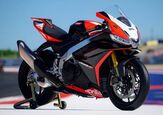
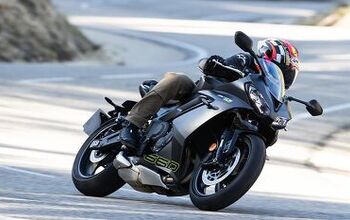
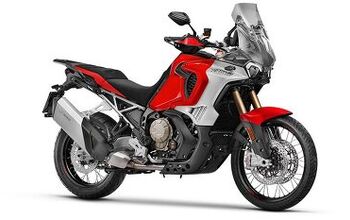
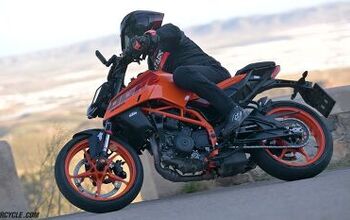
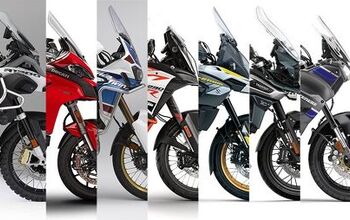
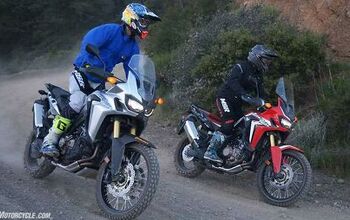

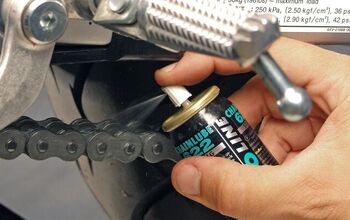



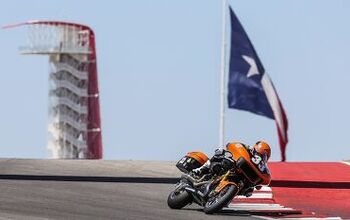
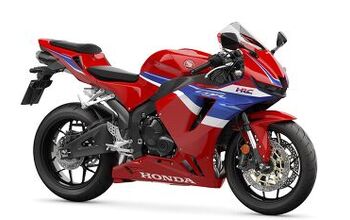

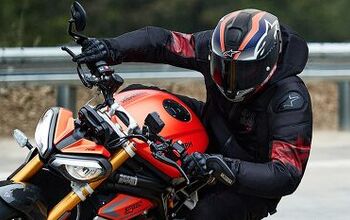
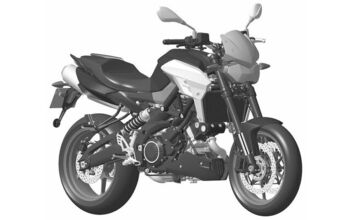

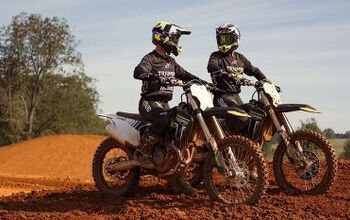
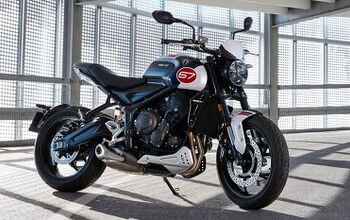
Comments
Join the conversation
Here's a little different perspective on that African Twin for you:
http://www.ebay.com/itm/Afr...
Even though this article is 5 years old now, it is still interesting and relevant (at least to me) for two reasons: 1. these bikes are options for some on the used market now, and more importantly 2. it compares bikes of different sizes directly to each other - which is a question every rider thinks about when considering what bike to get! But that is where it gets confusing for me. I have ridden thousands of miles on the Triumph 800 XCx, and agree that it is lacking in low end grunt compared to the others, so one has to get used to uphill off-road. But once you get used to revving higher and using the clutch, or tractoring up with TC, it is not so much of an issue. And it is super fun and at least equally capable in all other situations.
So here is the question I have about the article: It seems hard to believe that the Tiger's increased handling from it's much lower weight didn't make up for it's lack of grunt - especially when compared to the other elephant bikes. In the dirt and sand, the Tiger 800 should have been able to run circles around the BMW and Ducati in increased off road ability and 21" front wheel! It doesn't seem reasonable to suggest that a 647 pound bike can go the same places equally as a 474 lb bike! Any comment?
I noticed a large discrepancy in the article regarding the Tiger's weight. The Tiger's dry weight is 432 lbs, and wet weight is 474 lbs. Even Motorcycle.com has it listed in it's separate review as 519 lbs curb weight, BUT in this article it list's the 800's curb weight as 547 lbs!!! WTF!? That's 73 lbs over it's stated wet weight!!! Care to explain?
So even though I enjoyed the article, given all these discrepancies, it makes me wonder about your conclusion. Please comment